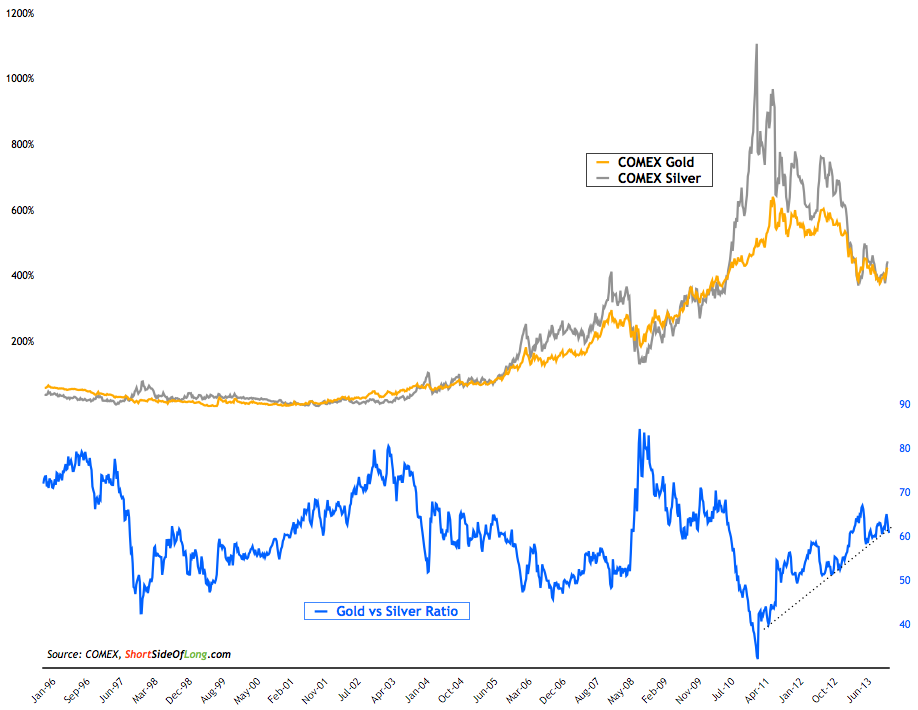Gold Silver Ratio_1
Post on: 23 Июль, 2015 No Comment

Trading gold-silver ratio can earn you money while you remain invested in the precious metals at all times — that’s the first and foremost reason why every Gold and Silver Investor should know more about this ratio.
At times silver underperforms gold and at times silver outperforms gold; in other words, the ratio between gold and silver (price of gold divided by the price of silver) moves up and down. If you buy silver when it’s cheap relative to gold and sell it to buy gold later (when silver is overvalued relative to gold), you will make more money than if you were simply diversified between the two metals. Before providing you with details of profitable trading strategies, let’s begin with the definition.
Definition
Gold-silver ratio is a number that describes how many ounces of silver is required to buy one ounce of gold, based on current trading prices. Mathematically, the value describes the strength of gold prices relative to silver (price of gold/price of silver). Investors use the value as a gauge to measure sideways moves of silver against gold. The ratio helps in diversifying precious metals portfolio by giving an insight to gold and silver market entry points.
In other words, by trading gold-silver ratio you can gain on the medium-term moves, but remain invested in the metals at all times. This might be very profitable if one day gold and silver both soar — most traders will still own much cash instead of gold and silver, but those holding metals will reap massive profits. This means that even if you are not a Trader, this strategy should not be overlooked.
The trade strategy behind silver gold ratio is that the spread in prices is expected to decrease when the ratio is high and is likely increase when the ratio is low. When the ratio widens “extreme” from historical averages (during high volatility periods in particular), gold appears overvalued. This opens up buying opportunities in silver. When gold and silver moves in tandem, investors are advised to take positions based on fundamentals or technical indicators available at the time. On the other hand, when the ratio correct to the lower “extreme”, silver is expected to outshine gold. However, defining “extreme” of the ratio is a subjective call.
Effectively, the strategy results in buying the metal on expected emergence/convergence of the ratio. This could heighten the market risk as the exposure to the metal increases over the time. To reduce risk, alternates such as futures, ETFs, options, pool accounts, gold and silver bullion, and coins can be used to replicate the physical trade.
Although futures trading provide huge leverage options, the risk associated with the trade also should be considered. ETFs will be the best proxy to execute the strategy based on silver-gold ratio just because of the “simple purchase”. Options involve purchase of silver calls and gold puts at high ratios and the reverse positions at low ratios. Although the option bets has the leverage advantages, the trade trims the gains on real trade (long dated options can be used to offset this risk).
On a broader sense, the ratio assists long-term investors to make appropriate calls in the precious metals market. For instance, when economic stability is disturbed (as seen during recession), investors shift towards safe havens such as gold — resulting in an abrupt increase in the ratio. That is, the ratio can also be used to measure the economic health.
The table below shows the wide fluctuations in the ratio, historically.














